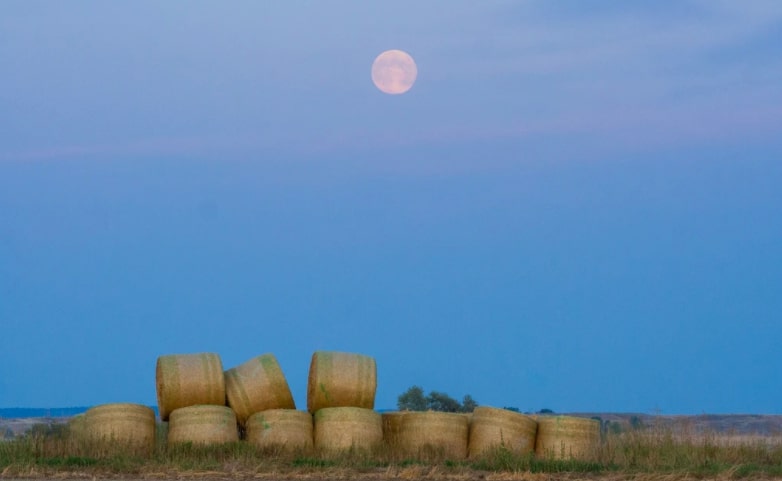A Harvest Moon is rising on Thursday evening and this term refers to the full moon rising in the Northern Hemisphere. Here in the Southern Hemisphere, however, a full moon is rising – which is also called a micro full moon.
“The reverse effect occurs in the Southern Hemisphere, where the astronomical seasons are opposite, and the September equinox is the vernal equinox. Here, the Moon rises more than 50 minutes later than on the previous day around the Harvest Moon. People in the Southern Hemisphere experience the Harvest Moon effect around the March equinox instead,” says Time and Date.
The full moon will be perfectly visible tonight at 11.05pm. You can watch it from afar, as it won’t be coming as close to Earth as a normal full moon. The micro full moon and will appear 14% smaller than a normal full moon.
It will fall on its orbit point furtherest from Earth, called apogee, which is why it appears smaller.
“The Moon orbits Earth in an elliptical path, which means one side of the path is closer to the Earth than the other. The point in the Moon’s orbit closest to Earth is called perigee, while the point in the orbit farthest from Earth is known as apogee,” says Time and Date.
In the Northern Hemisphere, the name ‘Harvest Moon’ is given to the full moon that falls closest to the September equinox, according to Time and Date. This can occur in either September or October.
“2020’s Harvest Moon on October 1 is also a Micro Full Moon, which means that it will look slightly smaller and less bright in the sky than a regular Full Moon. This Micro Harvest Moon is also this year’s Hunter’s Moon,” says Time and Date.
Interestingly, the Harvest Moon usually falls in September but every three years it occurs in October.
The name is the most famous of all Full Moon names. In the Northern Hemisphere, the term Harvest Moon was used by the Native Americans. It has also been recorded in Anglo-Saxon and Old High German languages too.
“For millennia, people across Europe, as well as Native American tribes, named the months after features they associated with the Northern Hemisphere seasons. Many of these names are very similar or identical,” says Time and date.
In ancient times, the seasons were tracked by following a lunar month. This is opposed to a solar year, which our modern-day calendar is based on.
Image: Unsplash






